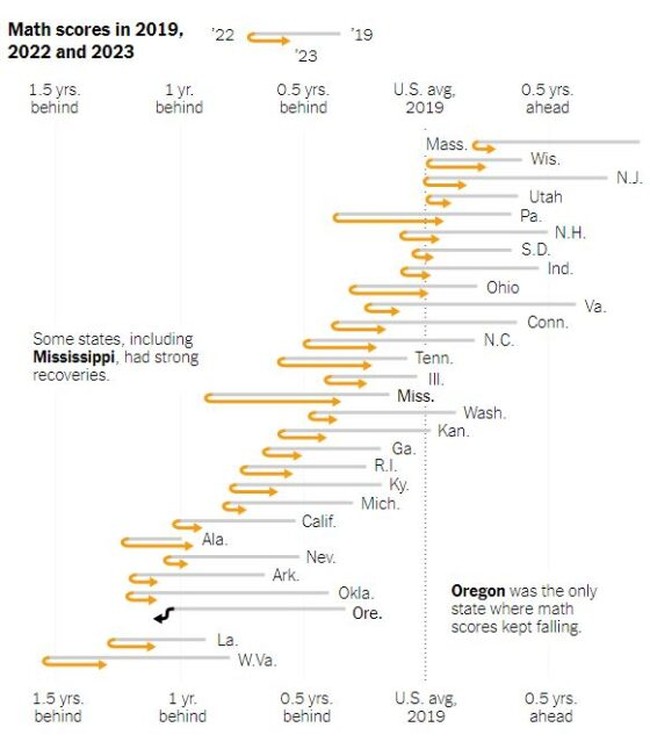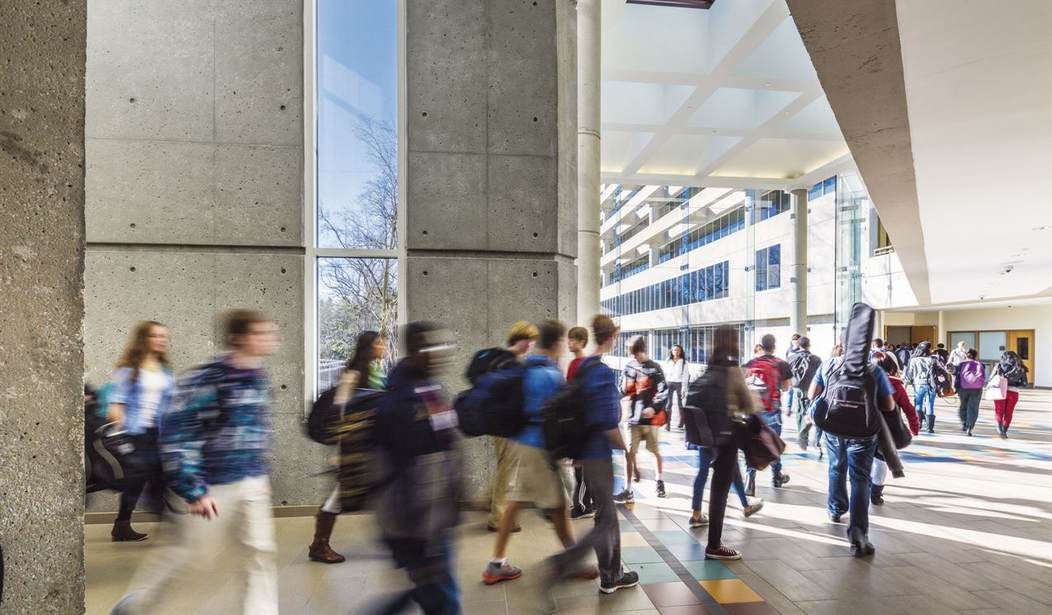A detailed look at pandemic learning loss nationwide and the various efforts to recover from it has found there has been some improvement but only about a third of what was lost. The document published this month is called the Education Recovery Scorecard and was put together by researchers at Stanford and Harvard. Here’s the overall summary of what the research found:
In this report, we use test score results from roughly 8,000 school districts in 30 states to measure the extent to which test scores changed from Spring 2019 to Spring 2022 and from Spring 2022 to Spring 2023…
Between 2019 and 2022, the average student in the 30 states lost 0.53 grade levels in math achievement and 0.31 grade levels in reading. In other words, during the pandemic, students missed out on half of a year’s typical learning in math and a third of a year in reading. Between 2022 and 2023, students recovered approximately one-third of the original loss in math (0.17 grade levels) and one quarter of the loss in reading (0.08 grade levels). Thus, although students have yet to return to pre-pandemic levels of achievement, progress is being made.
The catch is that the federal government spent more than $120 billion on schools, 20% of which they were required to spend on dealing with learning loss. That money is now running out so we may now be seeing the bulk of the recovery. In other words, it’s possible most of these students will never recover all of what was lost. The other thing the researchers found is that achievement gaps, between rich and poor, white and black, etc. are worse than ever.
The students most at risk are those in poor districts, whose test scores fell further during the pandemic. Though the new data shows that they have begun to catch up, they had much more to make up than their peers from higher-income families, who are already closer to a recovery.
The result: Students in poor communities are at a greater disadvantage today than they were five years ago…
The typical rich district is about a fifth of a grade level behind where it was in 2019. The typical poor district: nearly half a grade…
Racial gaps in student scores have also grown, with white students pulling further ahead.
One interesting aspect of this study is how much variability there was from state to state. Some states, like Massachusetts, where you might expect a robust recovery haven’t recovered well at all while others, like Mississippi, have recovered most of the losses. Here’s a chart showing the differences.

As you can see, Massachusetts has lost a lot of the advantage it had as of 2019. And sadly, Oregon has made no recovery at all in math and has continued to fall behind. But even that chart hides a lot of underlying variability within states.
As for what is working and what has not, I found this the least surprising line in the coverage:
Some focused on spending more federal dollars on academics — and less, for instance, on renovating school buildings. Some prioritized adding instruction time — via intensive tutoring, summer school or other sessions — which research shows can produce significant gains.
Not surprisingly, districts that focused on building renovations didn’t see as much success as those who focused on tutoring. It’s sort of par for the course that the government put up $120 billion for dealing with pandemic challenges and only 20% was required to be spent on learning. That money will officially run out in September and that means a lot of schools may not be able to continue the focus on further improvement.
…come September 2024, districts – which have collectively spent $60 billion in ESSER funds for each of the two prior years – will suddenly have to make do without it. That leaves states and districts staring down a massive fiscal cliff. While amounts vary across districts, on average, that equates to a single-year reduction in spending of over $1,000 per student.
Many districts will need to right-size their budgets. This is likely to involve painful cuts – the type that can consume leaders in any district. The cuts will be especially challenging in districts that used relief money to add staff or maintain excess capacity that they would not have been able to afford otherwise. Leaders will have to cycle through gut-wrenching processes as they consider eliminating staff positions, programs, and extracurriculars. In some districts, leaders may even have to wrestle with closing schools, raising class sizes, and postponing pay raises. It will likely become difficult for leaders to maintain focus on improving academic outcomes while also navigating intense community dynamics as staff and families cope with change and uncertainty.
The gravy train is over and most students are less than halfway recovered from the pandemic closures.








Join the conversation as a VIP Member